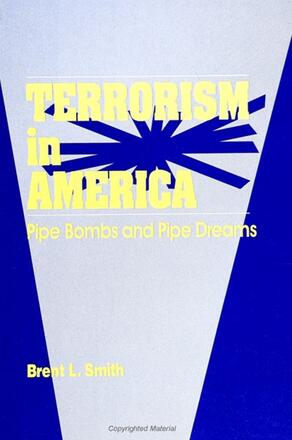Acknowledgments
Introduction
1 Terrorists in the Criminal Justice System: Political and Conceptual Problems
The FBI's Definition of Terrorism
The FBI and the Politics of Terrorism
The Attorney General's Guidelines
Needles in the Haystack: Terrorists in the Justice System
2 The Extent of Terrorism in America
General Trends in American Terrorism
Terrorism Trends by Type of Group
International terrorism
Puerto Rican terrorism
Jewish terrorism
Left-wing terrorism
Right-wing terrorism
Special interest or single-issue terrorism
General Conclusions about 1980s Trends
3 Extremists Right and Left
Typologies of American Terrorists
Characteristics of Left-Wing and Right-Wing American Terrorists
Ideology
Views on human nature and economic structure
Base of operations
Tactical approach
Targets
Profiling the American Terrorist
Age
Gender
Ethnicity
Education and occupation
4 The Righteous and the Extremists of the Right
The Ku Klux Klan
Sheriff's Posse Comitatus
The Aryan Nations
Covenant, Sword, and Arm of the Lord
The Order
5 Right-Wing Terrorists Try a Comeback
Bruder Schweigen Strike Force II (Order II)
Arizona Patriots
White Patriot Party
Same Song, Second Verse
The Future of Right-Wing Terrorism
Recruiting for the Right
What money might buy
6 Leftist and Single-Issue Terrorism
Misconceptions Regarding Leftist Terrorism in America
May 19th Communist Organization
Republic of New Africa (New African Freedom Fighters)
The United Freedom Front
Puerto Rican Terrorism
El Rukns
Special Interest or Single-Issue Terrorism
The Evan Mecham Eco-Terrorist International Conspiracy
The Animal Liberation Front
Summary and Conclusions
7 International Terrorist Activity in America
Characteristics of International Terrorists in America
Omega 7
Provisional Irish Republican Army
The Valhalla incident
The Redeye buyers
The Libyan Threat
Syrian Social Nationalist Party
Japanese Red Army
Amal
Summary and Conclusions
8 Criminalizing Terrorism: Problems Without Easy Solutions
Marx and Durkheim on Social Change
Consensus explanations of governmental response
Conflict explanations of governmental response
Conflict and Consensus as Variables
Exceptional vagueness
Explicit politicality
Broadened discretion in law enforcement
9 Punishing Terrorists
Differential Treatment: Leftists, Rightists, and International Terrorists
Variations in case outcomes
Variations in sentencing
Differential Sentencing Patterns: Terrorists and Traditional Criminals
Legal traditions in federal sentencing
Sentencing patterns: terrorists and traditional criminals
Conclusions
10 Dream On: Facts and Fantasies about American Terrorism
Some Conclusions about American Terrorism and American Terrorists
The characteristics of terrorists
The process of becoming a terrorist
Investigative and prosecutorial discretion
The function of juries and judges in terrorism trials
The severity of punishment for terrorists
Prospects for the Future
Appendix
Notes
Index
